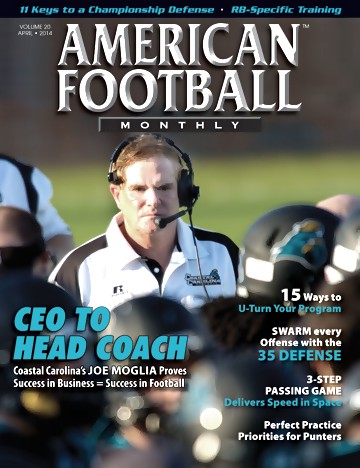AMERICAN FOOTBALL MONTHLY THE #1 RESOURCE FOR FOOTBALL COACHES
|
|
Article Categories
|
AFM Subscribers Ask With Joe Willis Part II • Head Coach • Cedar Park High School (TX)by: AFM Editorial Staff© More from this issueWhat is your thought process as far as setting the front and linebackers to the back or away from the back when the offense is in the shotgun? Stephen Harward, Assistant Coach, North Harford High School, Pylesville, Maryland.
When planning vs. a one-back offense, there are a couple of things I want to know before we shade the front to or away from the RB. 1) Do they bounce the back? If they have the potential to check and bounce, then I am going to lean toward slant calls vs. shades. Those slants can be executed off of “heads or head-up” alignments and can be very disruptive to inside zone. 2) As far as which way I want slants or shades working depends on the RB and the QB and who we deem the greatest threat. If the QB is the greater threat, I recommend kicking the front toward the RB, which tends to funnel the ball inside.<....The full article can only be seen by subscribers.
Subscribe today!

|
|
|
NOT A SUBSCRIBER?
Subscribe
now to start receiving our monthly magazine PLUS get INSTANT
unlimited access to over 4000 pages of 100 percent football coaching
information, ONLY available at AmericanFootballMonthly.com!
|
|
|
HOME
|
MAGAZINE
|
SUBSCRIBE
|
ONLINE COLUMNISTS
|
COACHING VIDEOS
|
Copyright 2025, AmericanFootballMonthly.com
All Rights Reserved






